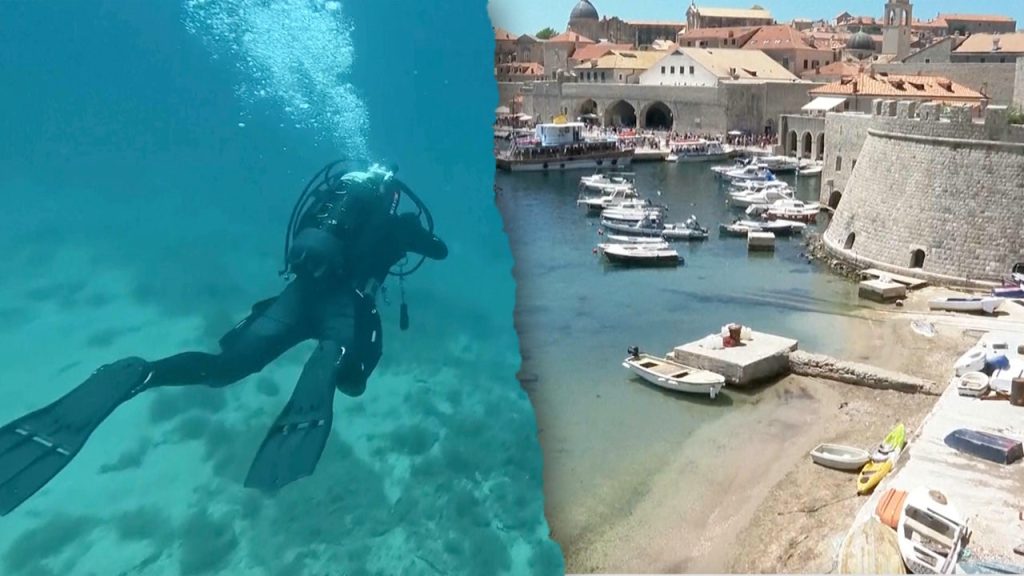In an extraordinary archaeological find, a team of workers installing a water pipeline in Dubrovnik, Croatia, unearthed a wooden shipwreck dating back to the 18th century. This discovery, made in the city’s Old Town harbor, adds to the region’s rich maritime history and brings new attention to its archaeological significance. Local marine archaeologists have confirmed the vessel’s age, marking a pivotal moment in historical research for the area, which is also famed for its portrayal in the HBO series “Game of Thrones.”
| Article Subheadings |
|---|
| 1) Discovery of the Shipwreck |
| 2) Importance of the Find |
| 3) Expert Analysis and Next Steps |
| 4) Historical Context of Shipwrecks in the Region |
| 5) Global Significance of Similar Discoveries |
Discovery of the Shipwreck
The moment of discovery came in April when workers, under the oversight of Ivan Bukelic, were engaged in installing a new water pipeline in the historical Old Town harbor area of Dubrovnik. Unexpectedly, they encountered a wooden structure approximately 30 inches beneath the ocean floor. The initial shock of discovery quickly shifted into excitement as they realized that they had uncovered the remnants of a ship dating from the late 18th century. Through rapid observation, Bukelic acknowledged, “I can now say I discovered a boat in the Old Town Dubrovnik.” This unearthing has not only captivated local media but has also attracted interest from historians and archaeologists worldwide.
Importance of the Find
The significance of the shipwreck cannot be overstated; it offers a tangible link to the past, providing insights into maritime practices during the 18th century. Irena Radić Rossi, a marine archaeologist, confirmed that the vessel is over 225 years old, though details such as its type and dimensions remain unclear for now. The discovery is especially relevant to the history of trade and commerce in the Dubrovnik region, which was previously known for its powerful maritime fleet in the Mediterranean during its peak. Researchers hope to gain new insights into the types of vessels utilized during this era and their respective roles in economic and cultural exchange.
Expert Analysis and Next Steps
Following the discovery, Irena Radić Rossi and her team have commenced extensive analysis to understand the ship’s origins and purpose. Utilizing radiocarbon dating, experts intend to further delineate the timeline of the wreck and preserve as much information as possible. “We must protect it for the future,” emphasized Radić Rossi, underscoring the need for careful handling of such fragile archaeological findings. The remains are currently being safeguarded to prevent deterioration while research continues. This could potentially require a multi-year effort involving conservationists to ensure their preservation for future generations of scholars and visitors.
Historical Context of Shipwrecks in the Region
Shipwreck discoveries are not new to Europe; comparable finds have been reported frequently throughout this year. Europe’s coasts, rich in maritime history, have been the resting place for numerous ships, each contributing to the understanding of naval practices. For instance, a recent discovery in Spain highlighted an ancient shipwreck unearthed from a former fish market, revealing clues about local history and culture. Similar shipwrecks have been identified along the Mediterranean coastline, emphasizing the need for ongoing underwater archaeological research. The latest find in Dubrovnik adds a narrative element to this growing body of discoveries, affirming the city’s long-standing connection to maritime trade.
Global Significance of Similar Discoveries
Globally, the discovery of shipwrecks often garners public interest and stimulates tourism and educational opportunities. As artifacts such as the Dubrovnik ship are recovered, they start to paint a broader picture of the historical context surrounding global trade routes, colonial endeavors, and cultural exchanges that defined the era. In many cases, shipwrecks provide valuable artifacts that contribute to museums, thereby enriching public knowledge of past civilizations. Thus, uncovering such historical treasures is vital, not just for academic research, but for cultural heritage as a whole.
| No. | Key Points |
|---|---|
| 1 | Workers discovered an 18th-century wooden shipwreck in Dubrovnik while installing a water pipeline. |
| 2 | The vessel is over 225 years old, according to marine archaeologist Irena Radić Rossi. |
| 3 | Further analysis and protection of the shipwreck are essential for historical research. |
| 4 | The find adds to the narrative of maritime history in Dubrovnik, emphasizing its significance in trade. |
| 5 | Similar discoveries globally underline the importance of underwater archaeology for cultural heritage. |
Summary
The discovery of the 18th-century shipwreck off the coast of Dubrovnik not only provides a valuable link to the city’s maritime history but also emphasizes the critical role of underwater archaeology in cultural heritage. As experts continue to study the remains, they will uncover new narratives about trade and naval practices of the past. This significant find serves as a reminder of the histories hidden beneath our oceans and the stories waiting to be told.
Frequently Asked Questions
Question: What was discovered in Dubrovnik?
A team installing a water pipeline in Dubrovnik unearthed a wooden shipwreck dating back to the late 18th century.
Question: Who confirmed the age of the shipwreck?
Marine archaeologist Irena Radić Rossi confirmed that the vessel is over 225 years old based on radiocarbon dating.
Question: Why is the discovery significant?
The shipwreck offers insights into the maritime practices and trade histories of the 18th century, enriching the understanding of Dubrovnik’s maritime heritage.


